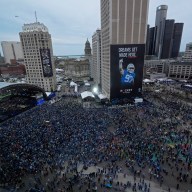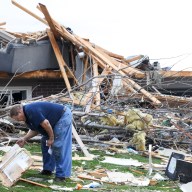Automotive enthusiasts agree that the Nissan GT-R, affectionately known as Godzilla, is one of the world’s great supercars.
But did you know that the heart of Godzilla – and the reputation of a supercar – comes down to just one person?
Here at Nissan’s giant Oppama plant, in a special room expressly built for this purpose, each one of the most technologically advanced and powerful engines ever offered by Nissan is assembled by a single technician.
Located about 30 miles southeast of Tokyo, this is not a glitzy high-tech facility, but a 5.6-million square-foot working plant that has produced more than 15 million vehicles since it opened nearly 50 years ago as Japan’s first full-scale passenger vehicle.
Steadily upgraded over the years, it is now one of the most automated in the world. The massive complex is adjacent to the wharf from which Nissan ships vehicles made in all three of its Japanese plants around the world. It is also the home of a large proving ground and Nissan’s Global Training and Research Centers, all of which play a role in the GT-R program. A number of engines are built here, but a specific area has been allocated for the VR38DETT as the GT-R engine is known within these four walls.
As the company’s performance and technology flagship, the GT-R carries significant importance and demands the most highly trained, experienced and skilled workers to build its engine. Those selected for this honor, instantly move to the top of the hierarchy among the 4,500 people working here. By tapping into a worker pool rich with seasoned and skilled technicians who have spent years in engine assembly, Nissan is able to select individuals with the necessary skills and a strong sense of pride.
As much an attraction as a bump in pay and peer recognition is the fact they get to spend their entire shift in a really cool room . . . literally. The air conditioning system maintains a steady 72 F while outside in the plant 90-degree days are more common. The air control also extends to maintaining a certain humidity level and extensive filtration to ensure no contaminants enter the room. The six or seven technicians working at any given time wear special clothing that not only marks them as elite, but as lint free.
Elite is the word here, as the all-new all-alloy engine was designed especially for the GT-R. It is a technological tour-de-force employing a variety of lessons learned in racing programs. That includes a special cylinder-wall coating to promote piston-ring sealing and reduce wear under the extreme pressures endured by this turbocharged monster.
Up to 26 of these potent 530-horsepower engines are produced here in a day, every one of the twin-turbocharged 3.8-liter V6s assembled by a single technician from start to finish. While mere feet away from the typical frantic life of a high volume assembly line, the pace here is much slower. The men here today work efficiently but there is no sense of haste. After watching robots assemble regular engines in other areas of the plants, ones known for long life and incredible reliability, the first thing you note here is the amount of time spent examining each piece before assembly and the care with which it is placed in the engine.
Using about 700 parts, it takes more than an hour and a half for these master craftsmen to build each engine in several stages: block assembly; head assembly; crank and piston assembly; peripherals and final testing. At any given time, there’s only one person working on the engine.
There is an interesting blend of old and new. There are scales where pistons and rings are weighed and then matched according to weights that are hand written on the piston tops. Computer-controlled torque wrenches ensure proper tightening and even sequence. If for example, when bolting a cylinder head to the block, a technician fails to follow the proper sequence, the system sounds an alert and ceases to function until a reset button is pressed, at which point the process is restarted.
After each engine is carefully completed and visually checked, it is fired up and checked for leaks, proper pressures and electric functions, then pushed across a narrow alley into an adjacent building where the dynomometers – which tell the tale if horsepower – live. If the cool, clean room is heaven, then this is hell.
Three dyno “cells” working non-stop, push engines through a variety of parameters all the way to the redline under load. Here, they generate an incredible amount of heat.
Once the engines are certified as meeting specs – within three percent of their 530-horsepower rating – they’re carefully crated and sent off for the 100-mile trip to the Tochigi factory to be transplanted into Godzilla.
The technicians say that one or two engines fail each week and are sent back to the clean room for disassembly, inspection and correction.
















